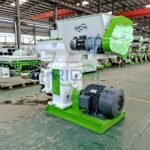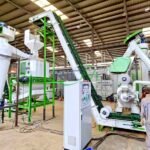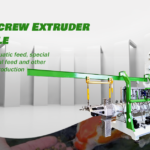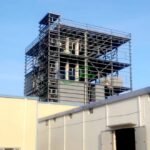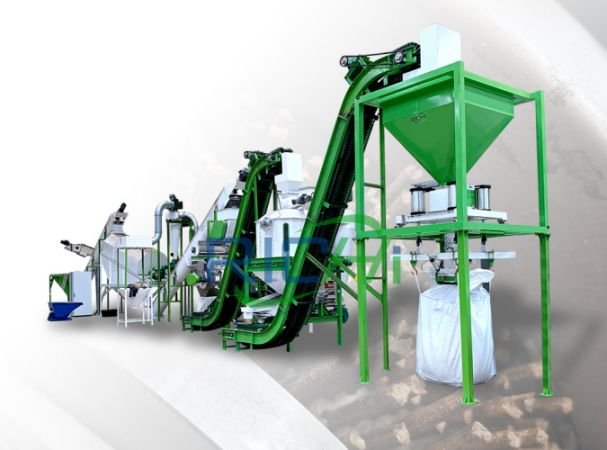Argentina, renowned for its robust agricultural sector and expanding livestock industry, offers a fertile ground for establishing a feed processing plant. However, designing such a facility requires meticulous planning and a thorough understanding of local market dynamics, regulatory requirements, and potential growth opportunities. This article provides a comprehensive guide to the key steps and considerations involved in designing a feed processing plant in Argentina.
1. Conducting a Market Analysis and Feasibility Study
Before initiating the design process, it’s crucial to perform a detailed market analysis and feasibility study. This involves:
- Assessing Demand: Evaluate the demand for various types of animal feed in Argentina, focusing on key livestock sectors such as poultry, cattle, and swine.
- Analyzing Competition: Understand the competitive landscape and identify potential market share.
- Evaluating Raw Material Availability: Investigate the availability and cost of essential raw materials like corn, soybean, and wheat.
- Location Considerations: Factor in proximity to suppliers and customers, transportation links, and utilities.
- Financial Projections: Estimate the initial investment required and project potential returns.
This analysis forms the foundation for making informed decisions about plant capacity, location, and the range of products to be offered.
2. Selecting the Right Location
Choosing an appropriate site for the feed mill is a critical decision that influences operational efficiency and logistics. Key factors to consider include:
- Proximity to Raw Materials: Sites near major agricultural regions like Buenos Aires, Córdoba, and Santa Fe are ideal due to their access to abundant raw materials.
- Transportation Access: Ensure the site is well-connected by roads, railways, or ports to facilitate easy movement of raw materials and finished products.
- Utility Availability: Secure access to essential utilities such as electricity, water, and natural gas.
- Regulatory Compliance: Ensure the site complies with local zoning laws and environmental regulations.
- Future Expansion Potential: Choose a location that allows for future growth if needed. (Related post:8-10T/H Feed Mill Construction in Egypt)

3. Determining Plant Capacity and Product Range
Based on the market analysis, decide on the plant’s production capacity and the types of feed it will produce. Considerations include:
- Feed Types: Determine whether the plant will produce poultry feed, cattle feed, swine feed, or other varieties.
- Feed Forms: Decide on the form of feed to be produced—whether mash, pellets, or crumbles.
- Specialty Feeds: Consider the potential for producing specialty feeds or custom formulations to meet specific market demands.
A medium-sized feed mill in Argentina typically has a capacity of 15-20 tons per hour, though this can vary based on market needs.
4. Designing the Process Flow
Efficient process flow design is crucial for optimizing production. Key steps in the process flow include:
- Raw Material Receiving and Storage: Design facilities for the intake and storage of raw materials, ensuring they remain in optimal condition.
- Grinding and Mixing: Plan for equipment that can grind and mix ingredients to the required consistency.
- Conditioning and Pelleting: If producing pelleted feed, design the conditioning and pelleting stages for maximum efficiency.
- Cooling and Crumbling: For pelleted feed, incorporate cooling and crumbling stages to achieve the desired final product.
- Packaging and Loadout: Design efficient packaging and loadout systems to facilitate the distribution of the finished product.
5. Selecting Equipment
Choosing the right equipment is critical to the plant’s success. Consider equipment that meets both operational needs and regulatory standards:
- Receiving Equipment: Install truck scales and dump pits for efficient raw material intake.
- Storage Silos: Equip the plant with silos for storing both raw materials and finished products.
- Grinding and Mixing Equipment: Select hammer mills or roller mills for grinding, and batch or continuous mixers for blending ingredients.
- Pelleting Systems: If pelleting feed, choose reliable pelleting equipment that meets Argentine standards.
- Cooling and Drying Equipment: Ensure adequate cooling and drying facilities for the feed products.
- Packaging Systems: Choose efficient packaging systems for both bulk and bagged products.
6. Implementing Automation and Control Systems
Modern automation and control systems can significantly enhance efficiency and product quality. Consider:
- Process Control: Implement Programmable Logic Controllers (PLCs) for automated process control.
- SCADA Systems: Use Supervisory Control and Data Acquisition (SCADA) systems for real-time monitoring and management.
- Batching and Inventory Management: Integrate software solutions for precise ingredient batching and inventory control.
- Quality Control: Employ advanced quality control and traceability systems to ensure consistent product standards.
7. Establishing a Quality Control Laboratory
A dedicated quality control laboratory is essential for maintaining product consistency and safety. Key equipment includes:
- Nutrient Analyzers: Use Near-Infrared (NIR) analyzers for rapid nutrient analysis.
- Microscopes: Equip the lab with microscopes for detailed ingredient identification.
- Pellet Durability Testers: Test the durability of pelleted feed to ensure it meets industry standards.
- Moisture Analyzers: Monitor moisture levels to ensure product quality.
- Microbiology Testing: Include equipment for microbiological testing to ensure feed safety.
8. Planning Storage and Logistics
Adequate storage and efficient logistics are key to smooth operations. Considerations include:
- Bulk Storage: Design bulk storage facilities for major ingredients like corn and soybean meal.
- Micro-Ingredient Storage: Ensure proper storage for smaller, yet critical ingredients.
- Finished Product Storage: Plan storage for both bulk and bagged finished products.
- Logistics Management: Design efficient truck loading and unloading facilities to streamline logistics.
9. Addressing Environmental Considerations
Environmental compliance is crucial, particularly in Argentina’s regulatory environment. Design considerations should include:
- Dust Collection: Install dust collection and filtration systems to maintain air quality.
- Wastewater Treatment: Design facilities for treating and recycling wastewater.
- Noise Reduction: Implement measures to minimize noise pollution.
- Odor Control: Incorporate systems to control and mitigate odors.
10. Ensuring Safety and Biosecurity
Safety and biosecurity are paramount in feed production. Key design elements include:
- Employee Safety: Install safety features such as guardrails and emergency stop mechanisms.
- Fire Prevention: Incorporate fire prevention and suppression systems throughout the plant.
- Pest Control: Implement pest control measures to protect feed quality.
- Biosecurity Measures: Consider installing truck wash facilities and other biosecurity measures to prevent contamination.
11. Navigating Regulatory Compliance
Compliance with Argentine regulations is non-negotiable. Ensure the plant design adheres to:
- SENASA Requirements: Align with the National Food Safety and Quality Service regulations for feed production.
- Building Codes: Comply with local building codes and zoning laws.
- Occupational Safety: Adhere to occupational health and safety standards.
- Environmental Regulations: Meet all environmental protection laws.
12. Incorporating Energy Efficiency and Sustainability
Energy efficiency and sustainability are increasingly important in modern feed production. Consider:
- Energy-Efficient Equipment: Opt for high-efficiency motors and drives to reduce energy consumption.
- Heat Recovery: Implement heat recovery systems to optimize energy use.
- Renewable Energy: Consider installing solar panels or other renewable energy sources.
- Water Recycling: Incorporate systems for recycling water to minimize waste.
13. Planning for Future Expansion
Future-proof the feed mill plant by designing with expansion in mind. Consider:
- Space for Additional Lines: Allocate space for potential future production lines.
- Utility Oversizing: Oversize utilities to accommodate future growth without significant upgrades.
- Modular Design: Use modular systems that can be expanded or adapted as needed.
14. Considering Local Workforce Needs
Design the plant to be operable by the local workforce, with considerations including:
- User-Friendly Interfaces: Install control systems that are easy to operate and maintain.
- Spanish-Language Signage: Ensure all instructions and signage are in Spanish for clarity.
- Training Facilities: Include training facilities to ensure staff are well-prepared for their roles.
15. Optimizing Costs
Cost optimization is key to a successful project. Strategies include:
- Balancing Automation and Manual Operations: Assess the cost-benefit of automation versus manual processes.
- Using Local Materials: Consider locally available construction materials to reduce costs.
- Efficient Plant Layout: Design the plant layout to minimize material handling and operational inefficiencies.
Conclusion
Designing a feed processing plant in Argentina requires a well-rounded approach that balances market demands, regulatory requirements, environmental considerations, and future scalability. By following these key steps and considerations, you can create a state-of-the-art facility that not only meets the current needs of Argentina’s livestock industry but is also poised for future growth and success. Thorough planning, attention to local context, and a commitment to quality and safety will ensure the plant contributes to Argentina’s agricultural efficiency and economic development while maintaining high standards for both domestic and international markets.


